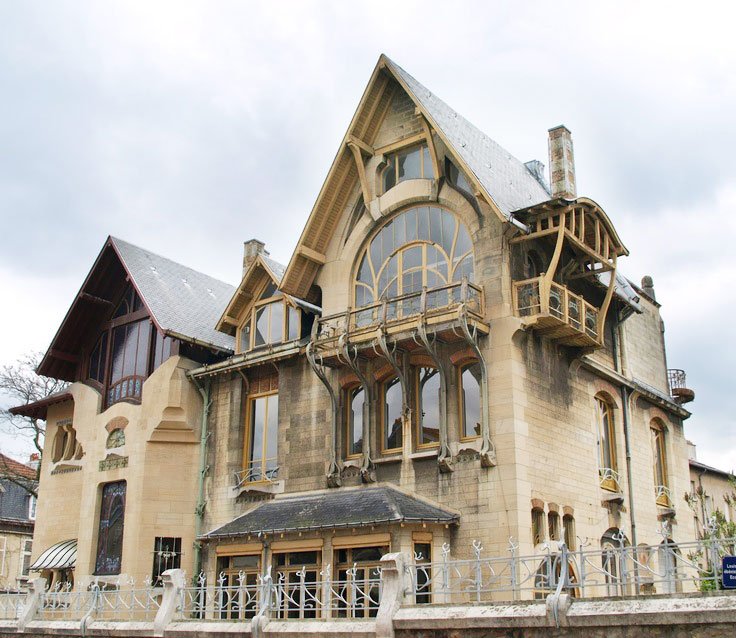#4928. Art Nouveau Facade: Elegance of Curvilinear Forms and Material Contrast
The building presented is a striking example of Art Nouveau architecture, presumably from the early 20th century. The facade is characterized by its distinctive asymmetrical composition and dynamic, fluid forms. Particularly expressive is the central section with its high gabled roof, adorned with an impressive glazing in the form of a semi-circular arch with radial divisions.
The exterior demonstrates a masterful combination of light sandstone masonry and wooden elements. Note the balconies and galleries with elegant curved wooden structures, creating a sense of organic connection with nature. The window openings vary in shape: from large arched ones to rectangular forms with fine muntins.
The facade's exquisite detailing includes sculptural elements and flowing curvilinear forms of window frames and cornices. The side volume features a more austere design with vertical wooden elements and a traditional roof. The contrasting combination of light stone in the main volume and dark wood in the upper parts and balconies creates a visual lightness to the structure.
The building appears to be a private mansion or villa created under the influence of French and Belgian Art Nouveau schools, possibly incorporating elements of regional architectural traditions. Despite some signs of incompleteness or restoration (construction elements are visible in the right part), the facade maintains the integrity of its artistic concept and demonstrates the characteristic Art Nouveau synthesis of functionality and decorative expression.
